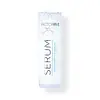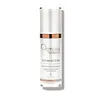What's inside
What's inside
 Key Ingredients
Key Ingredients

No key ingredients
 Benefits
Benefits

No benefits
 Concerns
Concerns

 Ingredients Side-by-side
Ingredients Side-by-side

Human Bone Marrow Stem Cell Conditioned Media
Skin ConditioningWater
Skin ConditioningAloe Barbadensis Leaf Juice
Skin ConditioningGlycerin
HumectantNiacinamide
SmoothingSodium Ascorbyl Phosphate
AntioxidantPEG-8/Smdi Copolymer
Hydroxyethylcellulose
Emulsion StabilisingXanthan Gum
EmulsifyingPhenoxyethanol
PreservativeAcetyl Octapeptide-3
HumectantBis(Tripeptide-1) Copper Acetate
Skin ConditioningSodium Hyaluronate
HumectantLecithin
EmollientAcmella Oleracea Extract
Skin ProtectingPolysorbate 20
EmulsifyingCamellia Sinensis Leaf Extract
AntimicrobialEthylhexylglycerin
Skin ConditioningCitric Acid
BufferingDisodium EDTA
Palmitoyl Tripeptide-37
Skin ConditioningParfum
MaskingHuman Bone Marrow Stem Cell Conditioned Media, Water, Aloe Barbadensis Leaf Juice, Glycerin, Niacinamide, Sodium Ascorbyl Phosphate, PEG-8/Smdi Copolymer, Hydroxyethylcellulose, Xanthan Gum, Phenoxyethanol, Acetyl Octapeptide-3, Bis(Tripeptide-1) Copper Acetate, Sodium Hyaluronate, Lecithin, Acmella Oleracea Extract, Polysorbate 20, Camellia Sinensis Leaf Extract, Ethylhexylglycerin, Citric Acid, Disodium EDTA, Palmitoyl Tripeptide-37, Parfum
Alternatives
Ingredients Explained
These ingredients are found in both products.
Ingredients higher up in an ingredient list are typically present in a larger amount.
Hydroxyethylcellulose is used to improve the texture of products. It is created from a chemical reaction involving ethylene oxide and alkali-cellulose. Cellulose is a sugar found in plant cell walls and help give plants structure.
This ingredient helps stabilize products by preventing ingredients from separating. It can also help thicken the texture of a product.
This ingredient can also be found in pill medicines to help our bodies digest other ingredients.
Learn more about HydroxyethylcelluloseWater. It's the most common cosmetic ingredient of all. You'll usually see it at the top of ingredient lists, meaning that it makes up the largest part of the product.
So why is it so popular? Water most often acts as a solvent - this means that it helps dissolve other ingredients into the formulation.
You'll also recognize water as that liquid we all need to stay alive. If you see this, drink a glass of water. Stay hydrated!
Learn more about WaterWe don't have a description for Human Bone Marrow Stem Cell Conditioned Media yet.